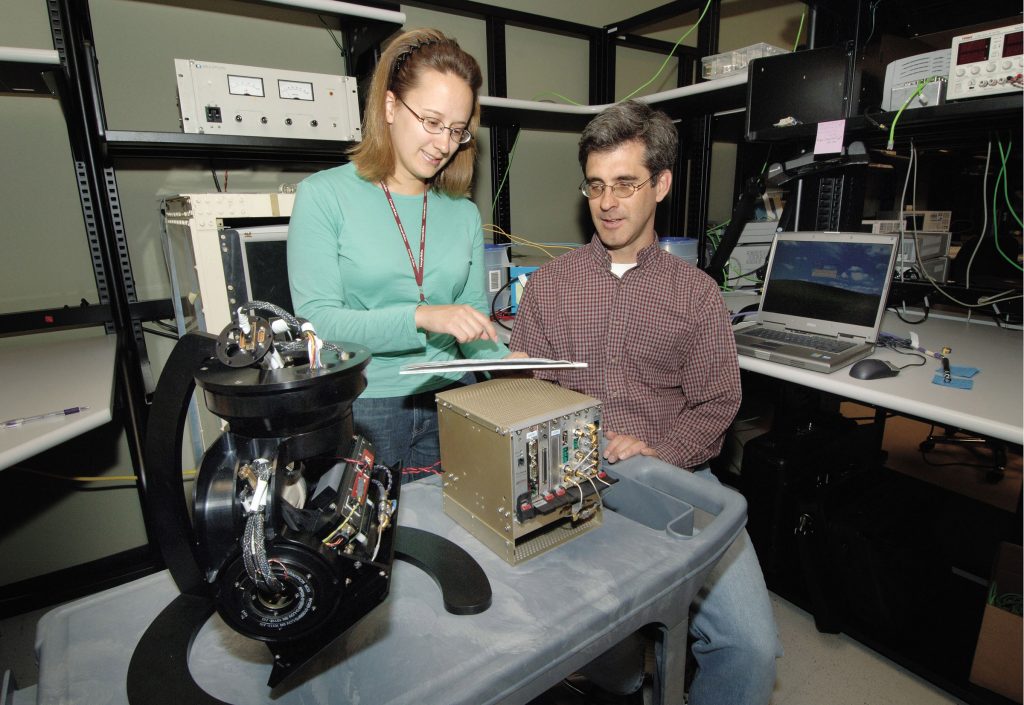MiniSAR flies for first time, taking images with resolution of 4 inches

Download 300dpi JPEG image “minisar.jpg,” 804K (Media are welcome to download/publish this image with related news stories.)
ALBUQUERQUE, N.M. — Researchers at the National Nuclear Security Administration’s Sandia National Laboratories flew what is probably the world’s smallest fine-resolution synthetic aperture radar (SAR) in May, making real-time images from the 6-kilometer range with a resolution of four inches. It was a first for the 25-pound instrument that may soon be used for reconnaissance on near-model-airplane-sized unmanned aerial vehicles (UAVs).
“What’s new is that the miniSAR is flying and working just as it should,” says Armin Doerry. Doerry, together with co-project leads Dale Dubbert and George Sloan, created the current approach for the miniaturized SAR several years ago.
Over the past year the trio and a core team of about 10 Sandia engineers finished development of the technologies that make up miniSAR, including integration of the radar subsystems and completion of the system software.
MiniSAR is less than one-fourth the weight and one-tenth the volume of SARs that currently fly on larger UAVs such as the General Atomics’ Predator. It has the same capability as the larger SARs of making fine-resolution images through weather, at night, and in dust storms. It is also “every bit as complex” as the few-hundred-pound systems currently flying, Doerry says
Small and lightweight, it can be put on airborne platforms that are one-tenth the cost of UAVs required for the larger SARs. It will also have a lower manufacturing cost than its larger cousins.
“MiniSAR is smaller and cheaper without sacrifice of performance,” Dubbert says.
MiniSAR took its first images on May 10 when it was flown on a Twin Otter aircraft owned by NNSA. This was followed by three weeks of image collection at various locations over Kirtland Air Force Base near Albuquerque.
Currently the miniSAR is connected to an operator control computer and data recorders on board the plane. The computer and data recorders will eventually be placed in a ground station, allowing the miniSAR to function on the smaller UAVs.
The miniSAR consists of two major subsystems: the Antenna Gimbal Assembly (AGA) — the pointing system that consists of the antenna, gimbal, and transmitter — and the Radar Electronics Assembly (REA) — the signal generator, receiver, and processors. The AGA transmits and receives the radar signal. The REA is the electronics package that generates the radar signals, controls the system, processes the data, and transforms it into an image.
The researchers expect the miniSAR to shrink to under 20 pounds in the short run. In the longer term, the team is working to exploit Sandia microsystems technologies (at MESA, the Microsystems and Engineering Science Applications complex), further shrinking miniSAR to as little as 5 to 10 pounds.
While miniSAR will initially be used for reconnaissance on small UAVs that can carry a payload of 50 pounds, it may also be used for precision-guided weapons. However, the cost and size of miniSAR will need to be reduced even more for weapon applications.
Sandia is negotiating license agreements with several military subcontractors, which would build the miniSARs in volume.
“While initial interest has been tremendous, we are looking for a long-term partner that not only wants to build them, but also has the vision to work with us on continuing enhancements,” Sloan says.